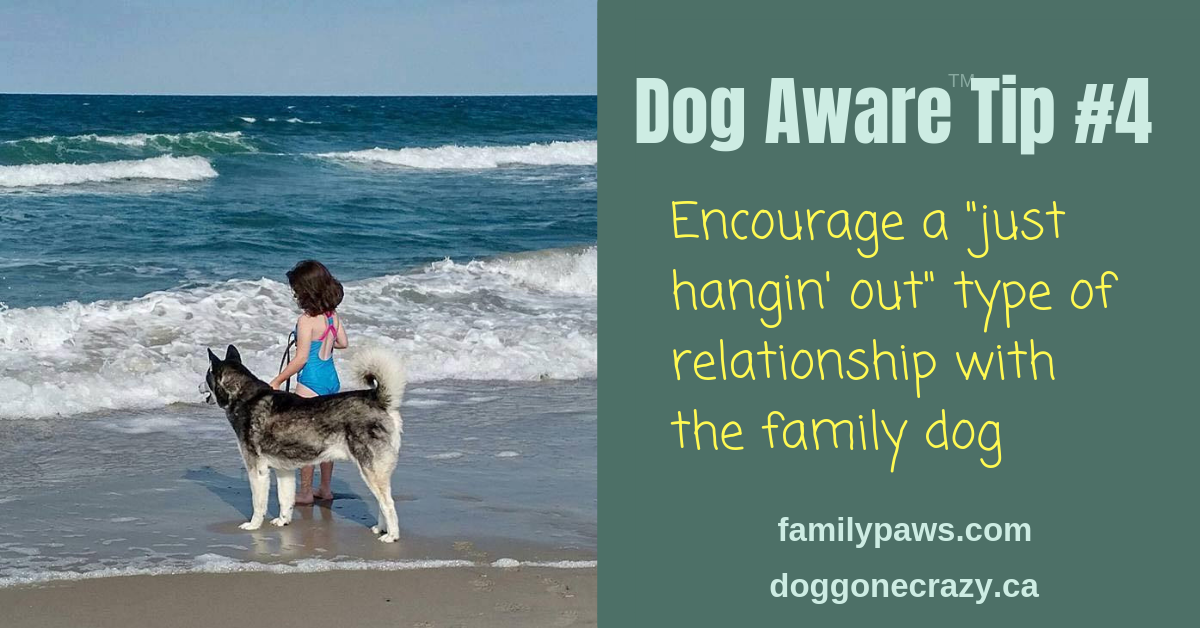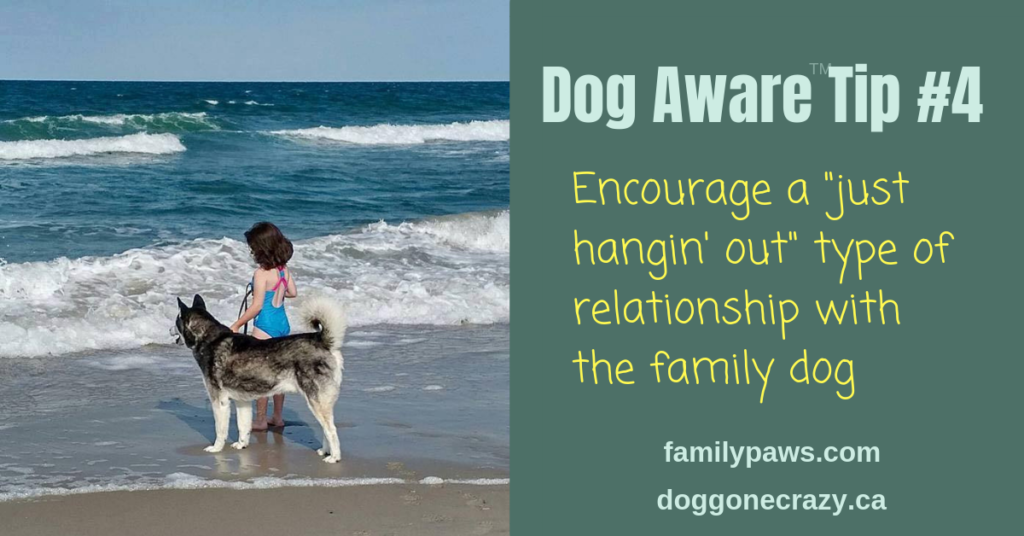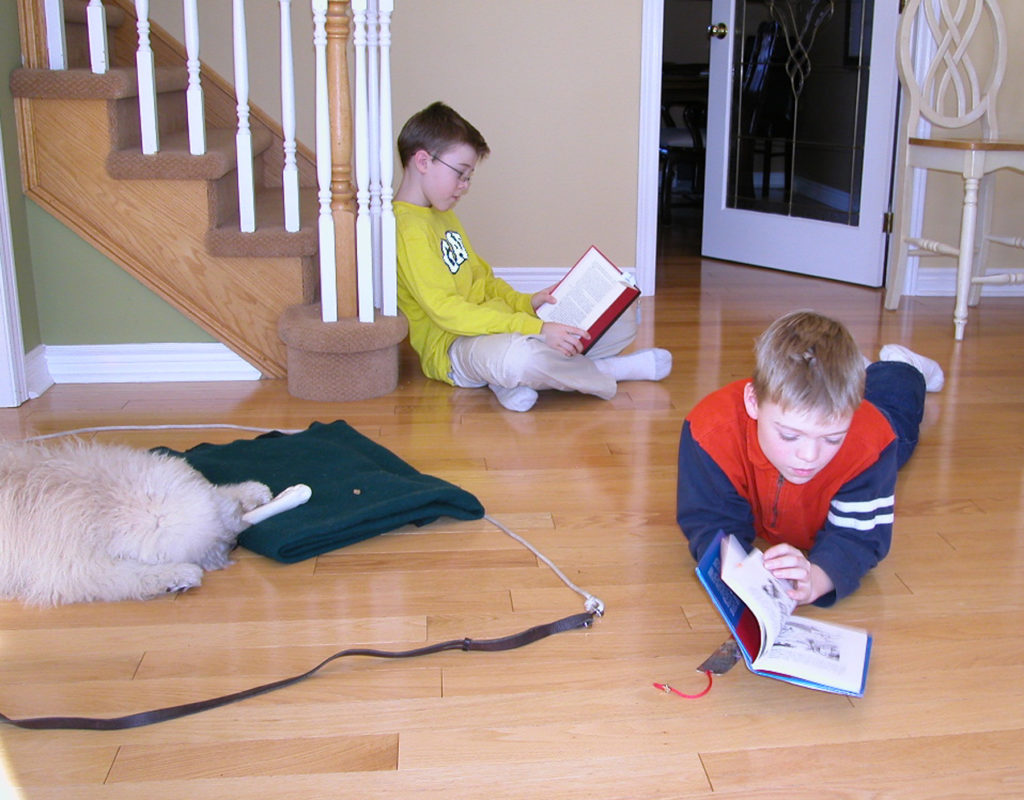Mandy and Rob decided that it was time to get a puppy, because they wanted their two kids, Sarah age 4 and Trevor age 6 to grow up with a dog. They felt sure that a dog would round out their family and be a faithful playmate for the kids. One day, to shrieks of delight, Mandy came home with a Golden Retriever puppy that Sarah insisted be named Sunflower. The puppy was a bundle of fluffy joy and the family fell instantly in love. Mandy showed her love by picking up the puppy, smooshing her face into the puppy’s face, making kissy noises and talking baby talk. Of course the kids copied her, picking up Sunflower many times a day and showering her with affection. The kids also had lots of fun tumbling and running with the puppy and Rob got some adorable photos and video. Sunflower grew bigger and started squirming and wriggling to get out of all the cuddling that she had previously seemed to enjoy. She became more boisterous and the wild play sessions with kids often ended in tears since Sunflower viewed her human family as playmates and didn’t know that her razor sharp teeth were hurting her friends.
This is a fictional story, but it’s one that every dog trainer has heard over and over. From this point the story could go one of two ways: 1) The family learns how to train their puppy, the parents set boundaries, use crates and gates appropriately and the puppy becomes a full member of the family, getting to hang out with them and go places. 2) The puppy becomes too much to handle, the kids become afraid of her, the parents are overwhelmed and the puppy ends up spending too much time alone in the backyard or in a crate.
Be a Role Model
Parents, you need to learn to model appropriate behavior for the kids. This means, treating the puppy with respect and not treating her like a stuffed animal. It means petting her with one hand and keeping your face out of her face. It means giving love and affection when the puppy seeks this out and not at all times whether the puppy is receptive or not.
Train as a Family
Hands down the best way to nurture a bond of love and respect between kids and puppy is to involve the kids in training. Kids, even as young as those in our story, can learn to click a clicker and toss treats for the puppy. You’d be surprised at how good young children can get at this. Multiple 3 minute training sessions a day are all it takes. Our favorite training resource for kids is the Clicker Puppy training DVD.
Set Boundaries
Give the puppy a safe place (a crate is ideal) where she can go to rest or chew on her toys where the kids won’t bother her. Reinforce your children’s behavior when they choose to leave the puppy alone, by giving them your attention and playing with them or doing an activity with them. Redirect kids and puppy to a more appropriate activity if games involving chasing, biting and wrestling are about to break out.
Here’s how puppies naturally play together. This is why it’s best if the puppy has respect for the kids and doesn’t see them as playmates.
Encourage Just Hangin’ Out
Kids and puppies don’t need to be interacting all day long. They need to learn to be together just chilling and enjoying the company. Try to set up opportunities for the family to be together with the puppy, without interfering with the puppy. At first this might require a crate or playpen, but this should not isolate the puppy. Be sure the puppy is in the same area as the rest of the family, with a long lasting chew treat or toy, so that she can enjoy her treat in peace.
Ages and Stages
As the child and puppy grow, relationships can change. The puppy may ignore a baby altogether and become intensely interested in chasing an active toddler. A previously calm and placid puppy may suddenly at 6-9 months old start pushing boundaries and becoming too rough with children she views as playmates. As children become adolescents they begin to smell different to the dog and the dog’s behavior toward the child may change once again. Parents need to be watching for subtle changes in the dog’s behavior toward the children and continue with training using positive methods throughout the life of the dog. Avoid punishment, reward good behavior, set limits (for both kids and dogs), provide kid and dog zones using gates and/or crates and involve kids in the care and training of the puppy from the beginning. This way you’ll be sure to foster and extraordinary relationship between the kids and the dog that will bring joy to the whole family.
More Resources
Family Paws Parent Education: Expert support and resources for families with dogs.
Clicker Puppy Training Streaming video – Essential training info for kids – 40% off sale – use the code PUPPYSALE40
Doggone Crazy Board Game – have fun while learning about dog body language and how to act around dogs
Doggie Detective® Teacher Kit – for humane educators who want to teach kids to be Dog Aware®


